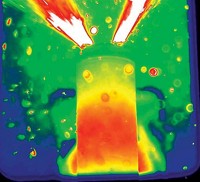Advertisement
Grab your lab coat. Let's get started
Welcome!
Welcome!
Create an account below to get 6 C&EN articles per month, receive newsletters and more - all free.
It seems this is your first time logging in online. Please enter the following information to continue.
As an ACS member you automatically get access to this site. All we need is few more details to create your reading experience.
Not you? Sign in with a different account.
Not you? Sign in with a different account.
ERROR 1
ERROR 1
ERROR 2
ERROR 2
ERROR 2
ERROR 2
ERROR 2
Password and Confirm password must match.
If you have an ACS member number, please enter it here so we can link this account to your membership. (optional)
ERROR 2
ACS values your privacy. By submitting your information, you are gaining access to C&EN and subscribing to our weekly newsletter. We use the information you provide to make your reading experience better, and we will never sell your data to third party members.
Physical Chemistry
A cautionary tale on reproducibility
January 22, 2007
| A version of this story appeared in
Volume 85, Issue 4
It's a chemistry professor's worst nightmare: A promising and published reaction inexplicably stops working. John J. Eisch of the State University of New York, Binghamton, found himself in the middle of such a nightmare when Ph.D. student Somnath Dutta graduated and passed along his project on the presumably thermal cleavage of bibenzylic C-C bonds with di-n-butylzirconium diethoxide to John N. Gitua. To their dismay, Eisch and Gitua tried to repeat Dutta's procedure but they found no C-C bond cleavage whatsoever. So began an eight-month investigation that uncovered two causes of their reproducibility problems (Organometallics, DOI: 10.1021/om061009y). First, they learned that iron salts catalyze the reaction, suggesting that some metal had leached out of Dutta's well-used magnetic stir bar. Second, they found that the cleavage was photochemical rather than thermal. Dutta's lab bench, 1.5 meters from the overhead lights, was better positioned for light to initiate the reaction, whereas Gitua's bench, 2.8 meters from the lights, didn't get enough illumination. "What sustained my faith and my determination to ferret out the unknown causes of apparent irreproducibility was that both students are superb and conscientious experimentalists," Eisch says.



Join the conversation
Contact the reporter
Submit a Letter to the Editor for publication
Engage with us on Twitter